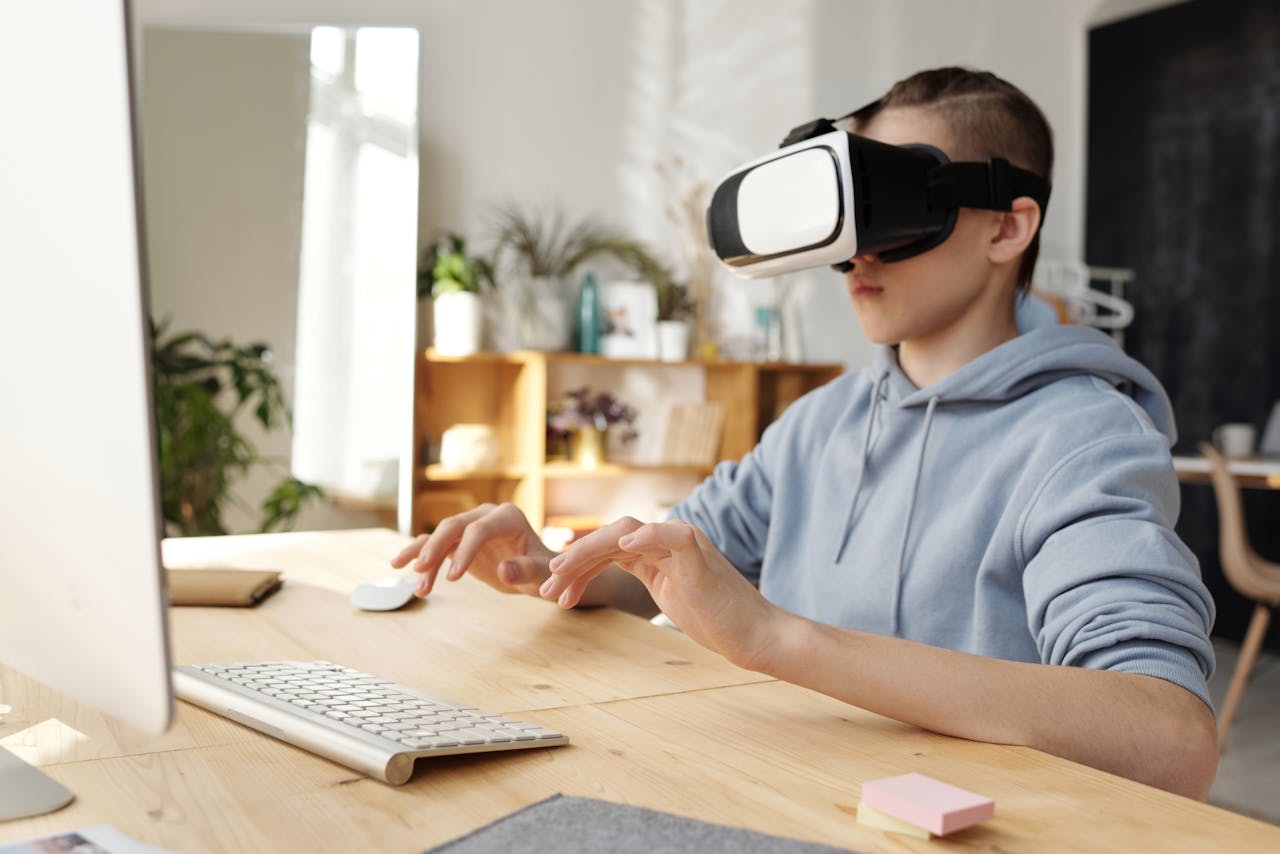Last updated on December 17th, 2024 at 04:16 pm
Learning has changed a lot with the help of technology. One of the newest and most exciting tools is Virtual Reality (VR). VR is making learning more fun and engaging for students. In this article, we’ll explore how VR is enhancing student learning experiences.
What is Virtual Reality (VR)?
Virtual Reality, or VR, is a technology that creates a simulated environment. When you wear VR goggles, it feels like you are inside a different place. You can look around and interact with things as if you were really there. In education, VR can take students to new places and help them understand subjects better.
How VR is Making Learning More Fun
VR is making learning more interesting and enjoyable for students. Here are some ways VR is being used in the classroom:
1. Virtual Field Trips: Imagine being able to visit the pyramids of Egypt or the Great Wall of China without leaving your classroom. VR can take students on virtual field trips to amazing places around the world. This helps students learn about different cultures and history in a fun and immersive way.
2. Interactive Lessons: VR can make lessons more interactive. For example, in a science class, students can explore the inside of a cell or travel through the human body. This hands-on experience helps students understand complex topics more easily.
3. Engaging Stories: VR can turn lessons into exciting stories. For example, students can go on a quest to solve a mystery in ancient Rome or explore the depths of the ocean. These adventures make learning feel like a game, keeping students interested and motivated.
How VR Helps Students Understand Better
VR is not just about fun—it also helps students understand subjects better. Here’s how:
1. Visual Learning: Some students learn best by seeing things. VR can show concepts in 3D, making it easier for students to grasp difficult ideas. For example, in a geography class, students can see and explore different landforms, helping them understand the subject better.
2. Safe Practice: In subjects like chemistry or biology, students can practice experiments in a virtual lab. This way, they can learn without any risk of accidents. It also allows students to try experiments that might be too dangerous or expensive in real life.
3. Real-World Skills: VR can help students develop real-world skills. For example, in a virtual job training program, students can practice tasks they will need in their future careers. This hands-on practice prepares them for the real world.
How VR Supports Teachers
VR is also a great tool for teachers. It helps them create more engaging and effective lessons.
1. Easy Lesson Planning: With VR, teachers can find ready-made virtual lessons on different subjects. This saves time and allows teachers to focus on helping their students learn.
2. Better Assessment: Teachers can use VR to assess students’ understanding in new ways. For example, students can complete a virtual task or solve a problem in a simulated environment. This helps teachers see how well students are learning.
3. Inclusive Learning: VR can support students with different learning needs. For example, students who struggle with traditional learning methods might find VR lessons more accessible and engaging. This helps all students succeed.
The Future of VR in Education
The future of VR in education looks bright. As technology improves, VR will become even more useful for learning.
1. More Affordable: VR technology is becoming more affordable. This means more schools will be able to use VR in their classrooms. As a result, more students will benefit from this exciting technology.
2. Better Content: As more educators create VR lessons, the quality and variety of content will improve. Students will have access to a wider range of subjects and experiences.
3. Lifelong Learning: VR can also support lifelong learning. Adults can use VR to learn new skills or explore new hobbies. This makes education a continuous and enjoyable part of life.
Conclusion
Virtual Reality is changing the way students learn. It makes lessons more fun and interactive, helping students understand complex topics better. VR also supports teachers by making lesson planning easier and providing new ways to assess learning. As VR technology continues to improve, it will play an even bigger role in education, benefiting students of all ages.
With VR, learning is no longer limited to the classroom. Students can explore the world, practice real-world skills, and enjoy a more engaging and effective learning experience.

